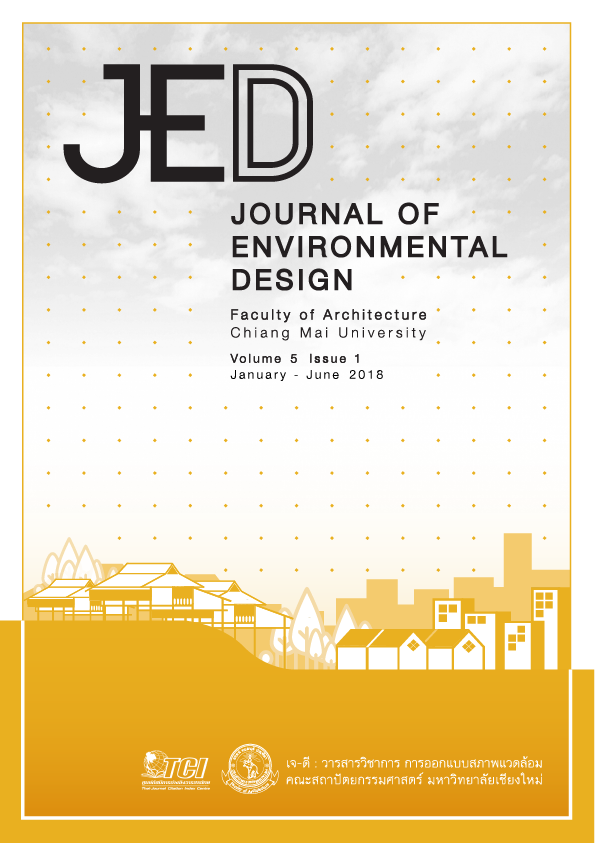Dynamics of Lahu vernacular architecture in the upper north of Thailand
Keywords:
vernacular architecture, ethnicity, Lahu, dynamic, changesAbstract
This paper is the result of the research in dynamic architecture in ASEAN regarding Lahu ethnic vernacular architecture and changes in Chiang Mai and Chiang Rai Provinces, the upper North of Thailand. It is the case studies of Kobdong Village in Fang, Chiang Mai Province and Huaynamrin Village in Viangpapao, Chiang Rai Province. Both villages are located on a sloping hill and comprise both traditional and modern architecture. This study aims to figure out the factors of characteristic changes in vernacular architecture in Thailand, particularly Lahu ethic architecture. The research covers the policies of development from the government and career support from the Royal Project and related organizations. The study also covers changes in society, ways of life, agriculture, and the existence of ethnicity in order to find out the correlation of causes of changes. It was found that the society and fast changes caused by communication technology of globalization in Thailand unavoidably affects Lahu architecture. In addition, the acculturation of Thai house construction was adapted to Lahu house construction, changing traditional house to modern house. Original construction rarely exists because of internal and external factors. However, the value of ethnic vernacular architecture still comprises artistic value which reflects Lahu lifestyles and culture.
References
Jarasakon, L. (2014). Sathapattayakam phuenthin Lahu lae karn plian plaeng nai phuen tee phaknuea ton bon khong Thai. (In Thai) [Vernacular archiัะพ tecture of Lahu and the change in Upper northern areas] (Master’s thesis). Chiang Mai: Faculty of Architecture, Chiang Mai University.
Office of the Royal Society. (2012). Phojananukrom chabap Ratchabandittayasathan (in Thai) [Royal institute dictionary]. Bangkok: Nanmee Publications.
Sateerasinlapin, S. (1984). Panha karn sueksa khong chaokao phao Musoe nai boriwen doi Musoe Changwat Tak. (In Thai) [The problem of the Lahu tribe in Doi Muser, Tak province] (Master’s thesis). Bangkok: Mahidol University.
Sirisai, S. (1999). Saranukrom klum chat ti phan Lahu. (In Thai) [Encyclopedia of Lahu ethnic groups]. Bangkok: Institute of Language and Culture for Rural Development, Mahidol University.
Sisuro, V. (2000). Sathapattayakam phuenthin nan samkhan chanai nai khwam laklai nai ruean phuenthin Thai. (In Thai) [Significance of vernacular architecture in the diversity of Thai traditional houses]. Bangkok: Silpakorn University.
Walker R. A., (Ed.). (1995). Mvuh Hpa Mi Hpa: creating heaven, creating earth: an epic myth of the Lahu people in Yunnan. Chiang Mai: Silkworm Books.
Wongprasert, S. (1983). Ban Muser. (In Thai) [Muser House]. Chiang Mai: Tribal Research and Cultural Institute.




